Disclosure: We may get commissions for purchases made through links in this post.
Mowing a lawn smoothly to the edges requires a right-sized strip. You'll need appropriate materials to build one, and you should plan how wide your strip would be before getting your supplies. If you are unsure of the correct measurement, you have come to the right place as we have done extensive research and come up with an answer to help you.
According to experts, a standard mowing strip should be within 6 to 12 inches in width. The size also depends on the size of your lawn and the design you have in mind. Some larger mowing strips could also serve as a walkway, while a smaller one looks neater while still providing the needed demarcation.
Apart from the width, other factors affect the size of your mowing strip, including the type of material and thickness. So read on as we shed more light on other vital aspects of constructing the best mowing strip for your lawn.
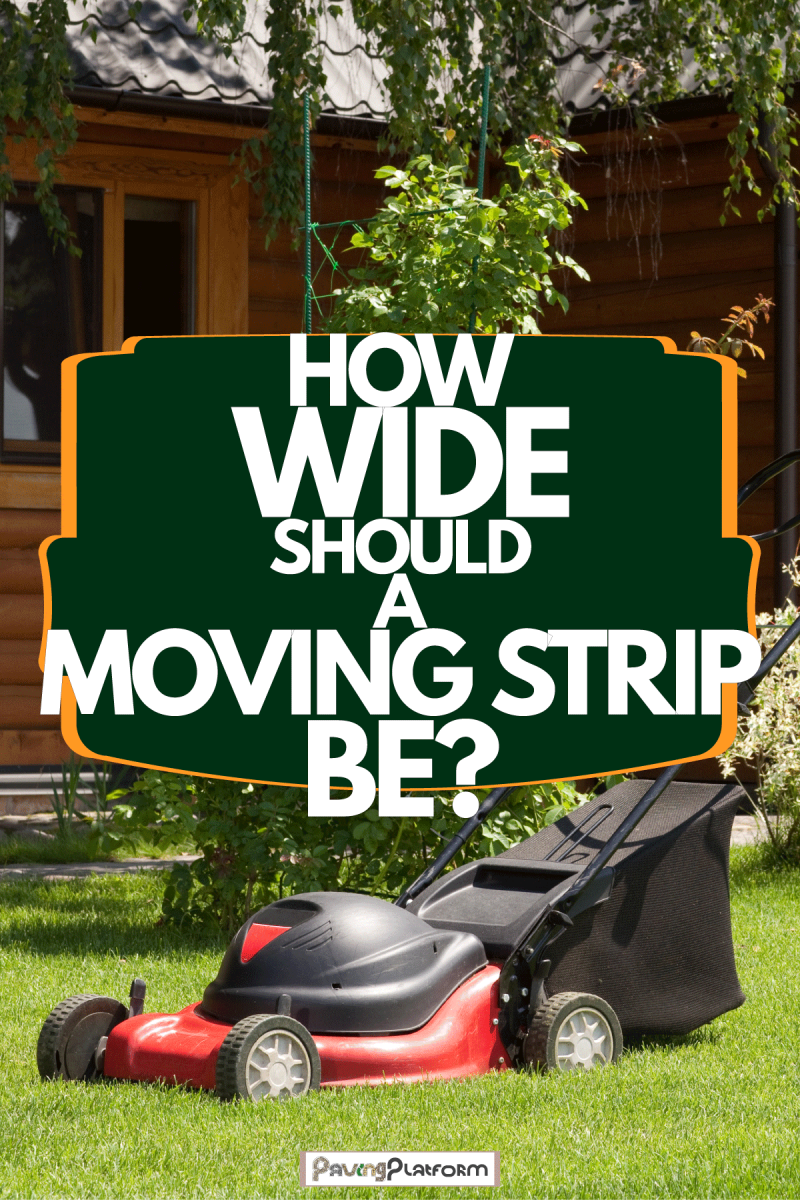
Choosing The Width of Mowing Strips
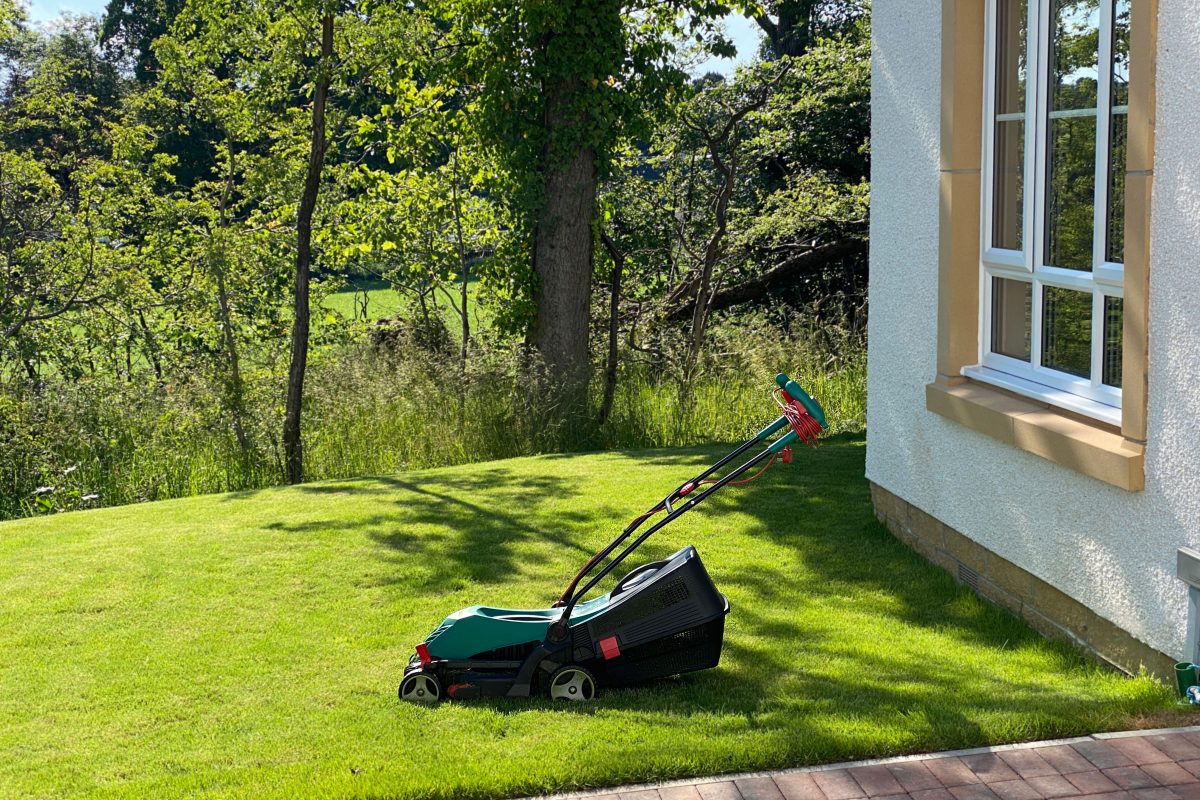
Mowing your lawn is not always easy. It can take hours, be hard on the back, and even cause an injury if you're not careful. In addition, it is also a hassle to have to go back and forth over the proper size calculations for your mowing strip.
On average, the width of a small mowing strip could be approximately 6 inches and a large one 12 inches. This can also depend on the size of your lawn and flowerbed. If you choose to go for a smaller width strip, you will have fewer issues regarding the mower blade brushing the strips when the mower machine passes overhead.
However, a larger-sized strip may present some challenges during mowing, but on the upside, you would have the luxury of using such strips for walkways. Larger mowing strips look more visible, and they require more materials and perhaps a couple of days to build.
Types of Mowing Strips
One of the best ways to have a beautiful, lush lawn is to use mowing strips. You create a striped appearance when you mow your lawn in different directions. Depending on your lawn's size, mowing strips take a few days or hours to build. To start, you would need to choose the type of mowing strip to build.
The best type of material can depend on your location, how much time you want to spend maintaining your lawn, and even your budget. Here are some options you should consider.
1. Concrete Mowing Strip
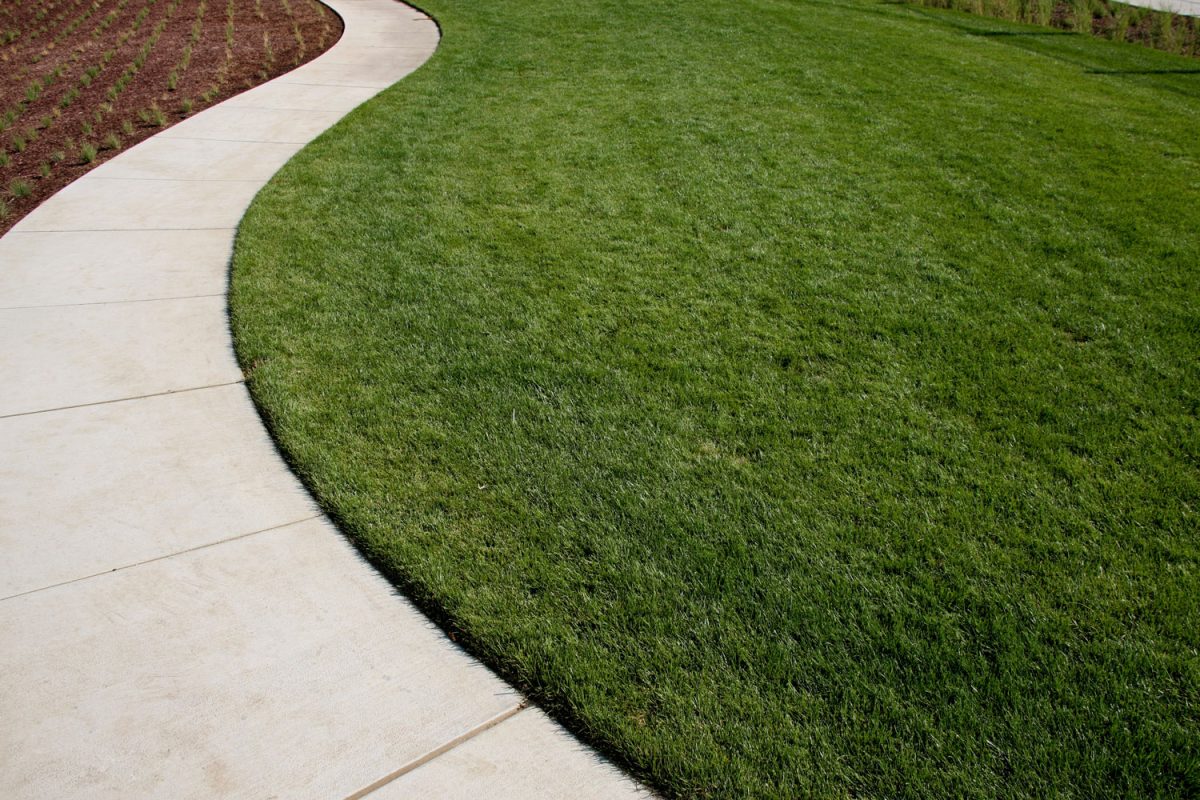
As the name implies, a concrete strip is made of a mixture of sand, cement, and water. Due to its strength, It is a more permanent solution for mowing strips than other types. It can also be used in different areas as it isn't easily susceptible to damage by natural elements.
When choosing a strip that would last long and be aesthetically valuable, a concrete strip should be the first choice.
Step-by-step Process of Creating a Concrete Mowing Strip
- To start with, first dig a trench, which should not be more than 8 inches.
- Using a plank or a board, create a wall to help shape the strip. For the board to stand erect, try using a stake to support it on both sides.
- While ensuring that the strip maintains a constant width, mix the concrete in the right proportions and shovel it down your dug trench.
- After filling the trench with the concrete, make sure that you smooth out its edges as well as its top.
- Allow the concrete strip to cure for 48 hours, after which you remove the board.
If you prefer durability over style, it will be best to go for a concrete type of strip. Plus, concrete can also be painted to improve the design. Read this insightful article for more about painting concrete.
2. Block Laid Mowing Strip
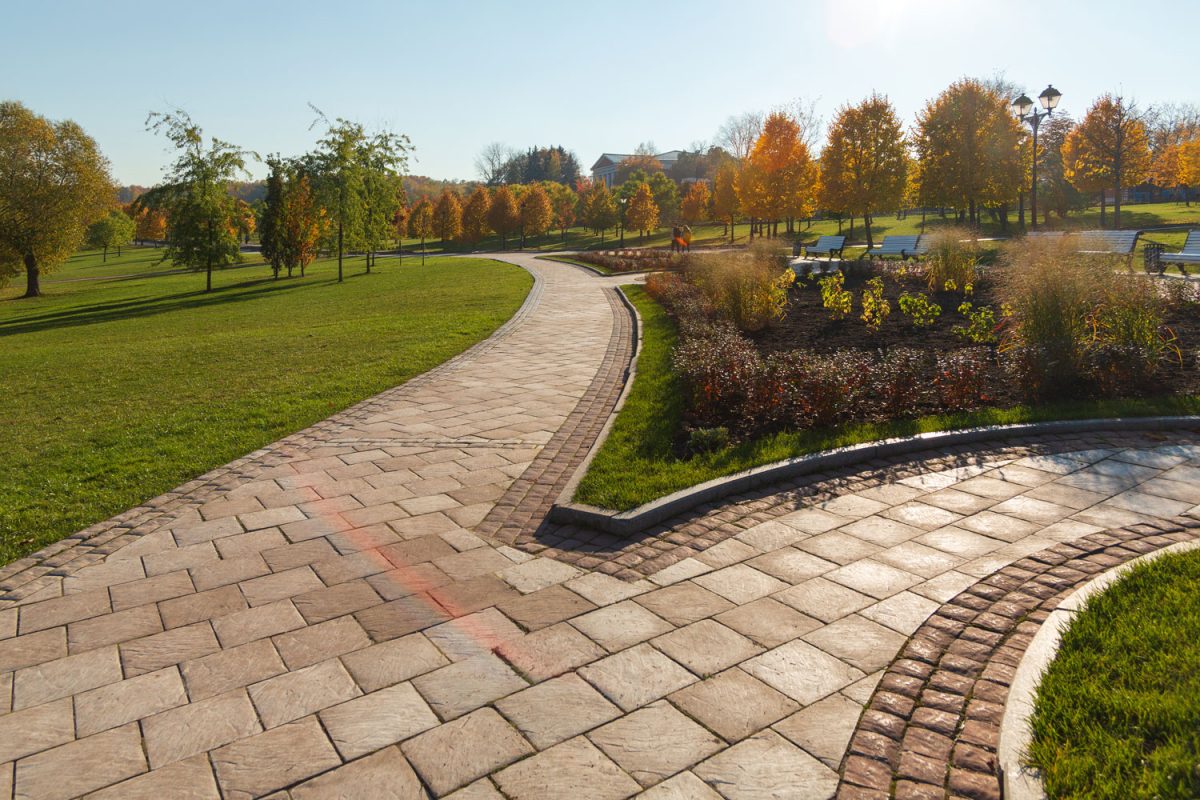
You can construct a mowing strip with blocks. This strip type is considered a close alternative to the concrete mowing strip. The process of building one requires several block units to be buried under the soil.
The heavier the block unit goes underneath, the more solid the strip would be. You could easily alter or replace this mowing strip if the lawn care equipment overly batters the strip.
3. Stone-Laid Mowing Strip
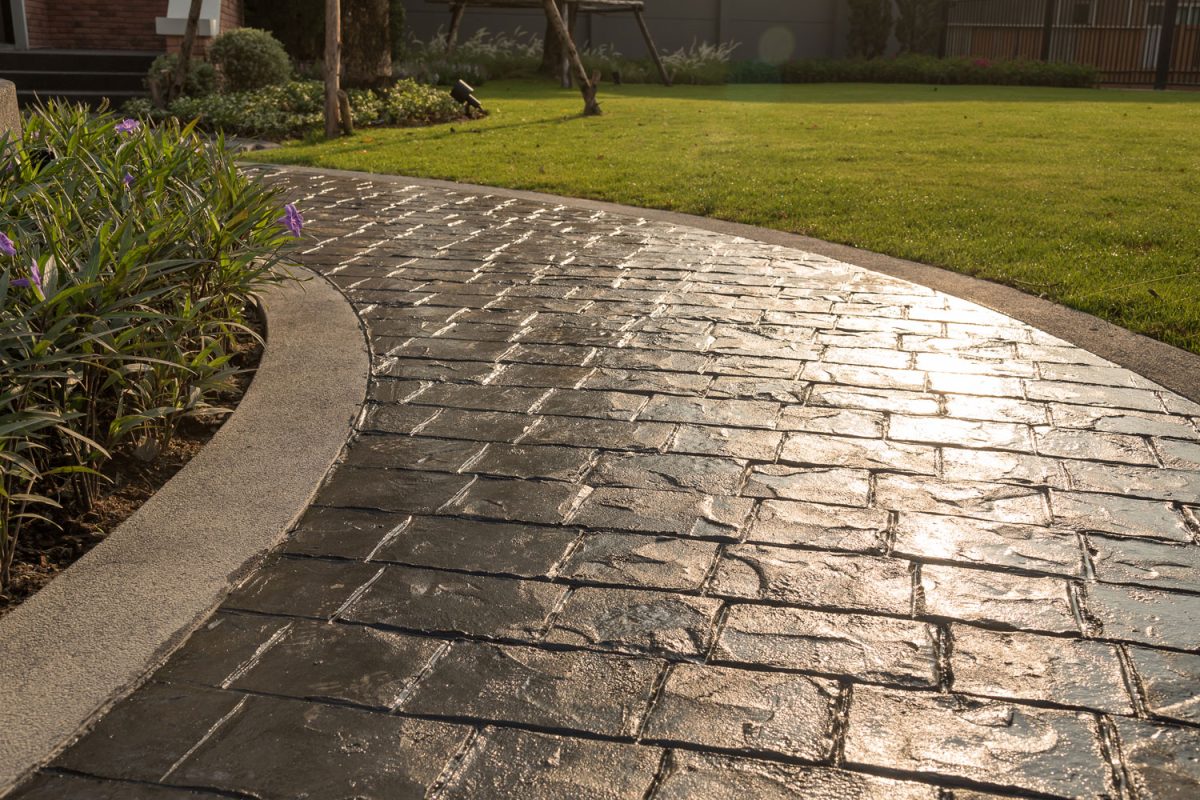
A mowing strip made of stone is considered high-end and classic. It was mainly used during the olden days when cement or blocks weren't popular. The stone arrangement contributes to the design. You can arrange each piece next to each other or attach or mix some of the stones with concrete.
Although stone is regarded as the best choice for mowing strips, it also comes with drawbacks. Stone strips have rough edges that need trimming. To avoid this, you have to use enough mortar during construction. compared to the other type of strip material, the stone is also the most expensive, but it looks very natural and offers insulation from the ground.
Another downside is that it can be challenging to install and maintain, and if you don't have the required skill, you may want to hire a professional for installation. Moss can also grow on stones affecting the look. Check this article for more about rocks and moss.
4. Metal Strip
If you prefer the different parts of your garden or lawn grass to maintain their respective boundaries, you should use a metal strip. It is rigid and keeps plants arranged at their bases. It is also fairly easy to install. When it comes to durability, metal does not crack or rot, but you will need to maintain properly it to prevent rusting.
How Thick Should a Mowing Strip Be?
A mowing strip should be solid in structure, no matter the strip material used. It should at least be between 25-50 mm thick. A concrete mowing strip, for example, would need to have a trench dug to give it a solid grip. Stone grip does not necessarily need trenches, it only needs to be trimmed after installation to make mowing easy and smooth.
How to Make a Mowing Strip
Making a mowing strip is easier and less stressful than you might think. The durability and design depend on the strip you decide to go for. The following steps would be helpful regardless of the type and structure you choose.
Steps In Creating a Standard Mowing Strip
- Decide what type of strip you want to build
- Mark out where the strip will be. Depending on what type of strip you go for, dig a trench that would house such strip material solidly.
- Put the material that you have chosen to use in the trench that you dug. If you choose a concrete strip, you should have the mixture ready to pour into the trench.
- A board and a stake must be in place to shape out the concrete strip.
- After placing the material, make sure it is smooth within the edges, especially if you choose a stone strip
- Make each strip unit is properly gripped, although this only applies if you are going for the block-laid strip.
- Leave the strips to settle for 48 hours.
What is the Best Edging for Lawns?
Lawn edgings are mainly used to stylishly separate one part of your yard from another part. Most edgings have qualities that would prevent the lawns from overstepping their boundaries.
When it comes to selection, choosing the very best edging for lawns, it all comes down to the choice of individuals. You might prefer a specific type because of their durability, or your primary goal might be yard aesthetic. It would be best to also consider the cost of installation and weather conditions.
Should You Edge Your Lawn Before Mowing?
Edging should come first, especially if you want to mow faster and more efficiently. If you decide to edge first, you have your working ground prepared for you. If you decide to mow first, you might have a uniform lawn. But its edges might be irregular because of the inability of the mowing machine to cut through the edges.
Whereas, if you do the edges first, you will have already set the level of your cutting right on from its edges, and this would be a length guide, thus ensuring a smooth-looking lawn.
Key Takeaway
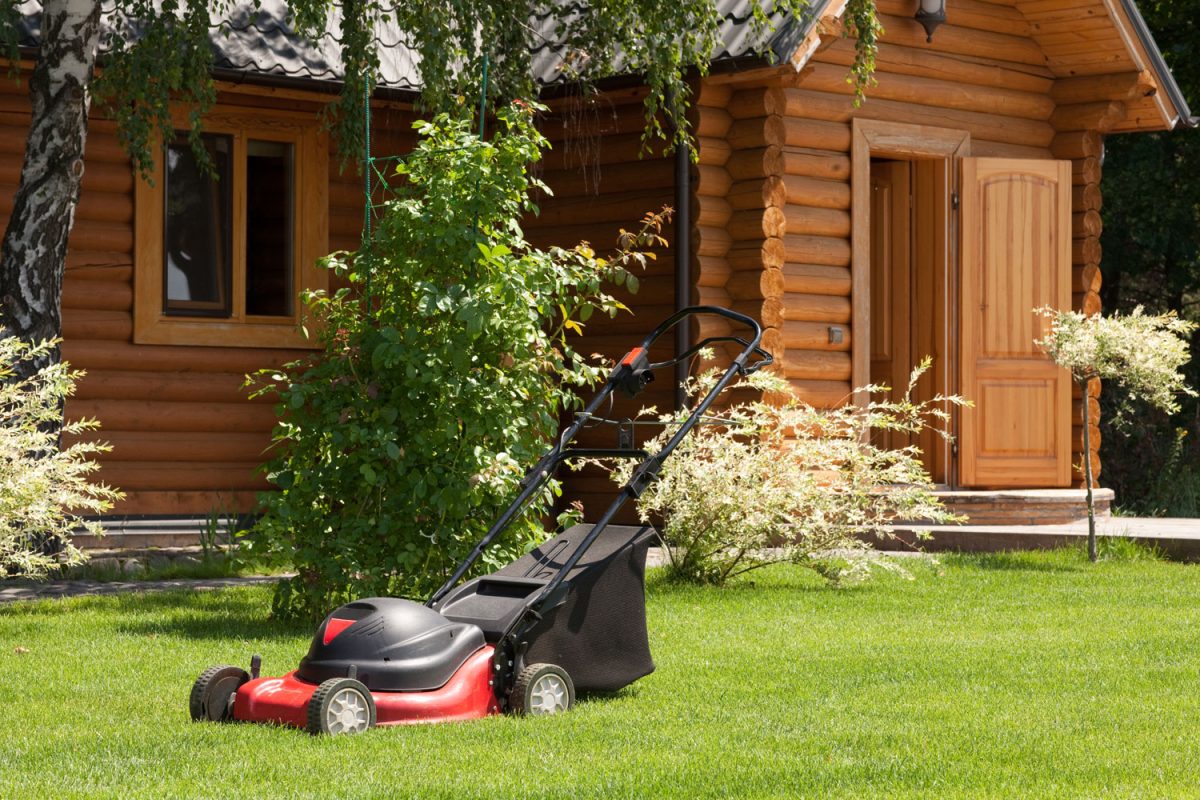
Mowing strips are a great way to add curb appeal to your lawn and make it look neat. They are often used in many types of lawns, including gardens. They can be made of many different materials, but not all are built to last. The best material for this project depends on what you want in your mowing strips.
Some people prefer inexpensive and easy-to-install options like metal, while others prefer rock because it looks more natural and lasts longer. If you plan on installing a mowing strip for the first time, this well-researched guide should educate you on the width, thickness, and type of mowing strip you should choose.

![Vibrant Red Paver Stone Path, Can You Spray Paver Sealer? [How To Apply It]](https://pavingplatform.com/wp-content/uploads/2022/04/Vibrant-Red-Paver-Stone-Path-600x400.jpg)
![Properly laid out red pavers for a garden, Can You Tint Paver Sealer? [And How To]](https://pavingplatform.com/wp-content/uploads/2022/04/Properly-laid-out-red-pavers-for-a-garden-600x400.jpg)
